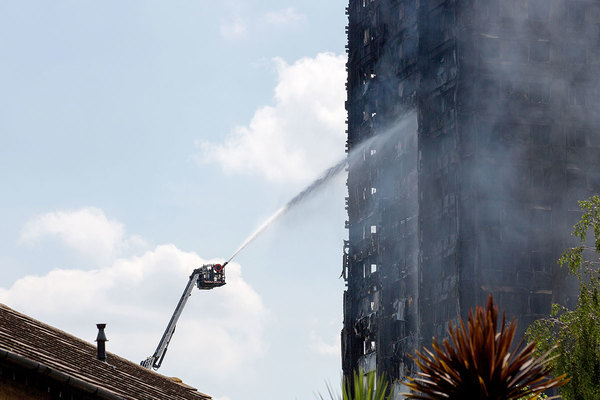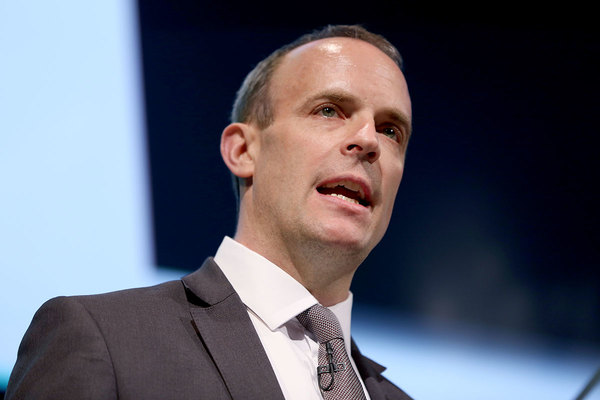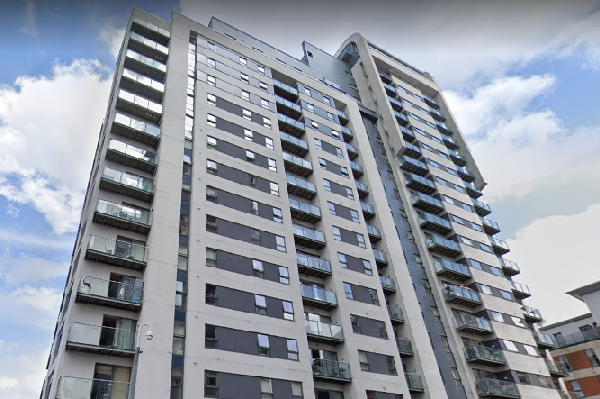You are viewing 1 of your 1 free articles
Government fire expert recommends continued use of combustible insulation on high rises
The chair of the government’s independent expert panel has called for limits on the planned ban on combustible materials on high rises to allow the continued use of combustible insulation.
Sir Ken Knight wrote to a committee of MPs last week to give his views on building regulations in the aftermath of the Grenfell Tower fire.
The government has recently launched a consultation on banning the use of all combustible materials on high rises, following pressure from the survivors of the Grenfell Tower blaze.
Addressing these plans, Sir Ken said he believed the ban should be limited to only the specific material used on Grenfell – aluminium composite material (ACM) panels with a polyethylene (PE) core and other polyethylene cored cladding panels.
“It may… be worth considering if the banning of cladding materials might more appropriately be narrowly focused on ‘banning’ the use of ACM PE (and any similar polyethylene core composite materials) on the external face of a building regardless of height,” he wrote.
“This approach would still enable combustible insulation to be used, but only if it is proved to be safe in the circumstances of the particular building by completion of the cladding test of BS 8414 [the official fire safety test for combustibles].”
The insulation used on Grenfell – Celotex RS5000 – passed a BS 8414 test when combined with cement fibre cladding panels in May 2014, and was later marketed as suitable for use on high-rise buildings.
This test was later withdrawn after Celotex admitted to “inaccuracies” between the test and the way it was described in the marketing.
In her expert evidence to the inquiry, Dr Barbara Lane, a fellow at Arup, said these inaccuracies included the presence of additional fire-resisting boards near temperature monitors and the possible lack of gaps in the cement cladding boards.
Related Files
Sir Ken’s letter also disagreed with cladding manufacturers over the interpretation of Approved Document B in relation to combustible cladding.
He argued that the standard of ‘Class 0’ applies only to the surface of a cladding panel, while the higher standard of ‘limited combustibility’ is required for its core.
The panels on Grenfell were certified as Class 0 by the British Board of Agrement.
This view appears to contradict a certificate bearing his signature from March 2012 which advised that the ‘field of application’ for a Class 0-rated panel included tall buildings.
A spokesperson for Exova, which issued the certificate, has previously said it would have been required to meet the standard of limited combustibility, but there is no mention of this in the document.
A further letter from the National Fire Chiefs Council to the committee, sent last month, echoed the view that guidance requires cladding panels to be of limited combustibility.
Never Again campaign
In the days following the Grenfell Tower fire on 14 June 2017, Inside Housing launched the Never Again campaign to call for immediate action to implement the learning from the Lakanal House fire, and a commitment to act – without delay – on learning from the Grenfell Tower tragedy as it becomes available.
One year on, we have extended the campaign asks in the light of information that has emerged since.
Here are our updated asks:
GOVERNMENT
- Act on the recommendations from Dame Judith Hackitt’s review of building regulations to tower blocks of 18m and higher. Commit to producing a timetable for implementation by autumn 2018, setting out how recommendations that don’t require legislative change can be taken forward without delay
- Follow through on commitments to fully ban combustible materials on high-rise buildings
- Unequivocally ban desktop studies
- Review recommendations and advice given to ministers after the Lakanal House fire and implement necessary changes
- Publish details of all tower blocks with dangerous cladding, insulation and/or external panels and commit to a timeline for remedial works. Provide necessary guidance to landlords to ensure that removal work can begin on all affected private and social residential blocks by the end of 2018. Complete quarterly follow-up checks to ensure that remedial work is completed to the required standard. Checks should not cease until all work is completed.
- Stand by the prime minister’s commitment to fully fund the removal of dangerous cladding
- Fund the retrofitting of sprinkler systems in all tower blocks across the UK (except where there are specific structural reasons not to do so)
- Explore options for requiring remedial works on affected private sector residential tower blocks
LOCAL GOVERNMENT
- Take immediate action to identify privately owned residential tower blocks so that cladding and external panels can be checked
LANDLORDS
- Publish details of the combinations of insulations and cladding materials for all high rise blocks
- Commit to ensuring that removal work begins on all blocks with dangerous materials by the end of 2018 upon receipt of guidance from government
- Publish current fire risk assessments for all high rise blocks (the Information Commissioner has required councils to publish and recommended that housing associations should do the same). Work with peers to share learning from assessments and improve and clarify the risk assessment model.
- Commit to renewing assessments annually and after major repair or cladding work is carried out. Ensure assessments consider the external features of blocks. Always use an appropriate, qualified expert to conduct assessments.
- Review and update evacuation policies and ‘stay put’ advice in the light of risk assessments, and communicate clearly to residents
- Adopt Dame Judith Hackitt’s recommended approach for listening to and addressing tenants’ concerns, with immediate effect
CURRENT SIGNATORIES:
- Chartered Institute of Housing
- G15
- National Federation of ALMOs
- National Housing Federation
- Placeshapers
The Paper Trail: The Failure of Building Regulations
Read our in-depth investigation into how building regulations have changed over time and how this may have contributed to the Grenfell Tower fire:













